What Are the Different Types of CBD?
In recent years, the popularity of CBD (cannabidiol) has skyrocketed as more people discover its potential benefits. As a result, various types of CBD products have emerged in the market, catering to different preferences and needs.
To answer the question 'What are the different types of CBD?', we will delve into the world of CBD and explore the three main types: natural, synthetic, and synthesised. We will also discuss the different types of natural CBD extracts, including whole plant, full-spectrum, broad-spectrum (THC-free), narrow-spectrum and isolate. Furthermore, we will touch upon the fascinating topic of CBD chirality and its implications on the effectiveness of CBD products.
By understanding the distinctions between these types of CBD, you will be better equipped to make informed decisions about which product is best suited for your needs and preferences. So, let's discover the answer to the question 'What are the different types of CBD?' and uncover the diverse landscape of CBD and its various forms.
Natural CBD
Natural CBD is a popular health supplement sourced from the C. sativa L. plant. It offers various benefits without the psychoactive effects associated with tetrahydrocannabinol (THC), making it an attractive option for those seeking to support their endocannabinoid system and promote a healthy internal balance.
The following section will explore how natural CBD is made and the different types of natural CBD extracts available in the market.
How is Natural CBD Made?
Natural cannabidiol (CBD) originates from the trichomes of the hemp plant initially as cannabidiolic acid (CBDA), which itself is derived from cannabigerolic acid (CBGA), the common precursor of all cannabinoids. The process of extracting CBD from hemp involves several steps:
1. Harvesting and drying: The plants are harvested and dried to reduce their water content before extraction.
2. CBD extraction: Various extraction methods can be used to extract CBD and other compounds, including CO2, ethanol, hydrocarbon (resin), cold press (rosin), and others. The extraction method will determine which natural compounds are extracted.
3. Decarboxylation: CBDA is converted into CBD by losing a CO2 molecule through heat application.
4. CBD refinement: Winterisation is used to remove fats and waxes from the CBD extract.
5. CBD distillation: Further refinement and removal of impurities are achieved through distillation.
6. Additional filtration (if needed): Chromatography can be used to remove any controlled cannabinoids.
7. Creating CBD isolate: Extract crashing and solvent-washing techniques are employed to produce pure CBD isolate.
What Are the Different Types of Natural CBD Extract?
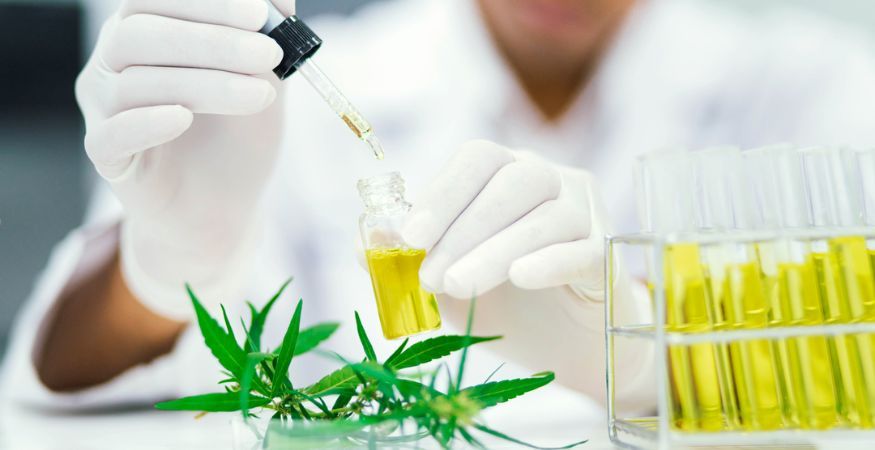
There are several CBD types of natural extract, each offering unique properties and benefits. The extraction method really determines if other compounds are pulled through in addition to just pure CBD.
Whole Plant CBD Extract
Whole plant extract is the crudest form of CBD. It contains all the compounds naturally present in the hemp plant, including cannabinoids, terpenes, flavonoids, fats, waxes, lipids, and chlorophyll. This crude extract is typically used as a starting raw material to produce full spectrum, broad spectrum, narrow spectrum extracts and CBD isolates.
However, some brands mix whole plant extract with a carrier oil such as hemp seed oil or MCT oil to produce a thick, extremely bitter CBD tincture. While whole plant CBD oils do deliver a full range of cannabinoids, terpenes and flavonoids, the presence of waste materials such as chlorophyll adds to its strong odour, thick texture and intense hemp-like flavour.
Full Spectrum CBD Extract
A full spectrum CBD extract contains CBD, traces of the psychoactive compound THC, and a complete range of other cannabinoids, terpenes and flavonoids. This type of extract is popular in the UK due to its unique grassy flavour and potent effects; however, the presence of THC, even in tiny amounts, means that it does not meet the UK legal MDR2001 requirement to contain no controlled cannabinoids.
The effectiveness of full spectrum CBD is likely down to the entourage effect. The entourage effect theory suggests that the various cannabinoids, terpenes and flavonoids in the hemp plant work together to enhance the impact of each individual compound.
Full spectrum CBD is manufactured by winterising a whole plant extract to remove fats, waxes and other waste materials. The result is a beneficial cannabinoid-rich extract with a smooth texture and mild flavour.
Broad Spectrum CBD Extract

Broad Spectrum CBD Extract
Broad-spectrum is one of the most popular types of CBD extract available today. It is similar to full-spectrum CBD extracts in that it contains other cannabinoids, terpenes, and flavonoids, but it differs in one crucial aspect, it is THC-free. This means that it meets the UK legal requirement of not containing any controlled cannabinoids while still containing a broad range of other beneficial compounds.
As with full spectrum, broad spectrum CBD contains enough different compounds to create enhanced results through the entourage effect. Consequently, broad spectrum CBD products are considered as the most effective type of natural CBD and unlike full spectrum CBD products you can purchase them legally in the UK. Because they're free from THC and plant waste compounds, they often have a lighter appearance and more palatable taste.
Narrow Spectrum CBD Extract
Narrow-spectrum CBD extract is created through an enhanced refinement process that removes additional cannabinoids (including THC) as well as some terpenes and flavonoids. The resulting extract is primarily made up of CBD, a few other cannabinoids and minimal terpenes or flavonoids. It's generally used to make affordable products that are often chosen by people looking to reduce the intake of certain cannabinoids, terpenes or flavonoids.
Because narrow spectrum CBD products contain a smaller range of beneficial compounds, they're likely to produce a milder entourage effect and you may have to use more. They're usually free from controlled cannabinoids, so they are legal to purchase in the UK.

CBD Isolate
CBD isolate is an extract that contains only CBD. There are no other cannabinoids or plant compounds, so it won't activate the entourage effect. This makes it cheaper and less potent than all other types of CBD extract.
The isolate extract itself can usually be up to 99% pure CBD; however, it's used to make various products that range in strength and potency. Some people choose CBD products made with isolate because they know they will just be consuming pure CBD and no other cannabinoids or plant substances.
Because pure CBD isolate is entirely free from plant substances and waste products, it's odourless and tasteless. This makes it well-suited for use in flavoured CBD products or for people who don't like the taste of hemp.
Is Natural CBD Sold in the UK?
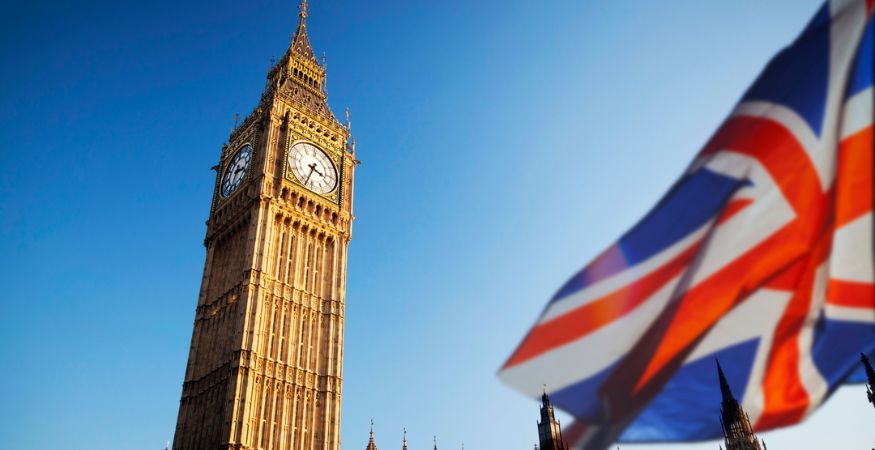
Yes, natural CBD is sold in the UK with a wide variety of products and consumption methods available:
CBD Oils
CBD oils are the most popular method of consuming CBD in the UK. Occasionally called CBD oil drops, they are made by extracting CBD from low-THC strains of the C. sativa L. plant (hemp) and then diluting it with a carrier oil, such as MCT oil or olive oil. CBD oils come in various strengths and spectrums, including whole-plant, full-spectrum, broad-spectrum, narrow-spectrum and CBD isolate (single cannabinoid spectrum).
CBD oils are legal in the UK if they are free from THC and listed on the FSA novel foods register. It's important to purchase CBD oils from reputable sources to ensure the quality and legality of the product. You can purchase a legal premium 100% cannabis broad-spectrum CBD oil from Bud & Tender.
CBD Capsules
CBD capsules are an easy and convenient way to consume CBD. They are available in various strengths and spectrums, including full-spectrum, broad-spectrum, and CBD isolate. CBD capsules are legal in the UK if they are free from THC and listed on the FSA novel foods register.
CBD Topicals
Topical CBD products are applied directly to the skin and are available in various forms, including CBD creams, CBD balms, and CBD salves. They are designed to provide localised relief and are popular for their potential benefits for skincare. CBD balms are a type of topical CBD product that is thicker and designed to provide more long-lasting relief for dry skin or sore muscles.
When it comes to CBD topicals, it's important to choose a product that fits your needs. Some topicals may contain different types of CBD, such as full-spectrum CBD or broad-spectrum CBD, while others may contain CBD isolate. When choosing a topical, it's worth taking your time to discover which CBD type is right for you.
CBD Edibles
CBD edibles are food products that contain CBD. They are available in various forms, including gummies, chocolates, and baked goods. CBD edibles come in different strengths and spectrums, including full-spectrum, broad-spectrum, and CBD isolate. CBD edibles are legal in the UK if they are free from THC and listed on the FSA novel foods register.
Synthetic CBD
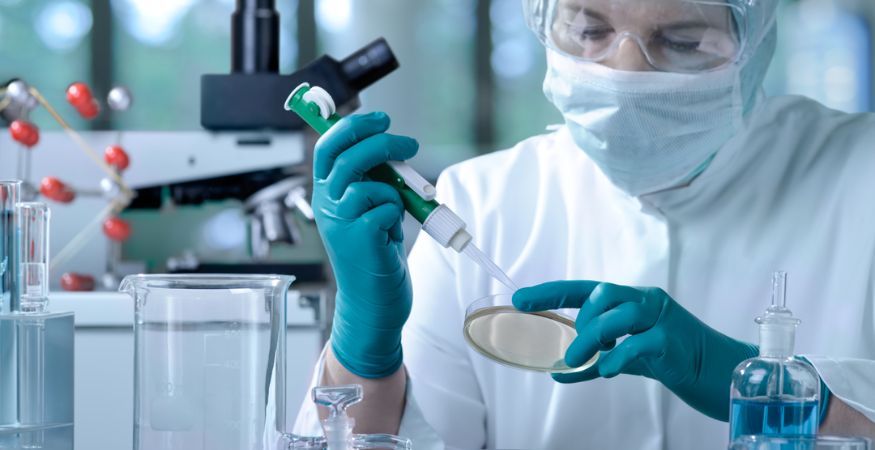
Synthetic CBD refers to a type of cannabidiol (CBD) that is produced through chemical or biological processes in a laboratory setting rather than being extracted from hemp plants. This form of CBD is chemically identical to the naturally occurring compound found in these plants and can be used in various products such as oils, capsules, and edibles.
How is Synthetic CBD Made?
The process of creating synthetic CBD involves the following stages:
1. Selection of base materials: Synthetic and semi-synthetic CBD can be produced using ingredients like limonene, a citrus terpene, or by modifying yeast or other bacteria to produce the desired compound.
2. Chemical synthesis: The base materials are subjected to chemical reactions in a controlled environment to create the synthetic CBD molecule.
3. Purification: The synthesised CBD is then purified to remove any impurities or unwanted byproducts from the chemical reactions.
4. Crystallisation: The purified synthetic CBD is crystallised into a powder form, which can then be mixed with carrier oils or other ingredients to create various CBD products.
Is Synthetic CBD Sold in the UK?
Yes, synthetic CBD products are available on the market in the UK. However, brands selling synthetic CBD cannot claim that their products are natural. Interestingly they are not legally required to disclose whether their products are synthetic or not. It is essential for consumers to research and verify the source of CBD in the products they purchase.
Synthetic CBD is not inherently bad if the stereoisomer used is identical to that found in natural CBD. A stereoisomer is a molecule with the same molecular formula but a different arrangement of atoms in space. Suppose the synthetic CBD has the same stereoisomer as natural CBD. In that case, it will function the same way in the body, interacting with the endocannabinoid system and providing similar potential benefits as its natural counterpart.
Synthetic CBD is an alternative to natural CBD that is produced through chemical or biological processes in a laboratory setting. It is available in the UK market, and consumers should be aware of the source of CBD in the products they purchase. When the stereoisomer of synthetic CBD is identical to natural CBD, it can function similarly in the body and provide comparable potential benefits.
Synthesised CBD

Synthesised CBD is a form of semi-synthetic CBD that is produced in a laboratory setting using bacteria or yeast rather than being extracted from the C. sativa L. plant. This method offers a more controlled and consistent production process, ensuring the purity and quality of the final product.
When a product is synthesised from lab substances, it's classed as an entirely synthetic procedure (synthetic CBD). However, if the synthesis begins with plant or animal extracts it's known as a semi-synthetic approach (synthesised CBD).
How is Synthesised CBD Made?
Bacteria-based synthesis:
In the bacteria-based synthesis method, genetically modified bacteria are used to produce CBD. The bacteria are engineered to contain specific genes that enable them to convert certain compounds into CBD. These bacteria are then cultured in a controlled environment, where they consume a specific nutrient source and produce CBD as a byproduct. Once the desired amount of CBD has been produced, it is extracted and purified from the bacterial culture.
Yeast-based synthesis:
Similarly, in the yeast-based synthesis method, genetically modified yeast strains are used to produce CBD. The yeast cells are engineered to contain specific genes that enable them to convert certain compounds, such as sugar, into CBD. The yeast is then cultured in a controlled environment, where it consumes the sugar and produces CBD as a byproduct. The CBD is then extracted and purified from the yeast culture.
Other methods:
Other methods for synthesising CBD may involve chemical synthesis using ingredients like limonene, which is derived from citrus fruits. However, bacteria and yeast-based methods are currently the most common and efficient ways to produce synthesised CBD.
Is synthesised CBD sold in the UK?
Yes, some brands in the UK use synthesised CBD in their products. The use of synthesised CBD can offer several advantages in terms of quality and efficacy. Since the production process is more controlled and consistent, the resulting CBD product is often purer and free from contaminants, such as residual cannabinoids like THC. This ensures that CBD products meet the strict legal requirements in the UK, which mandates that CBD products should not contain any controlled cannabinoids.
Different Types of CBD Chirality
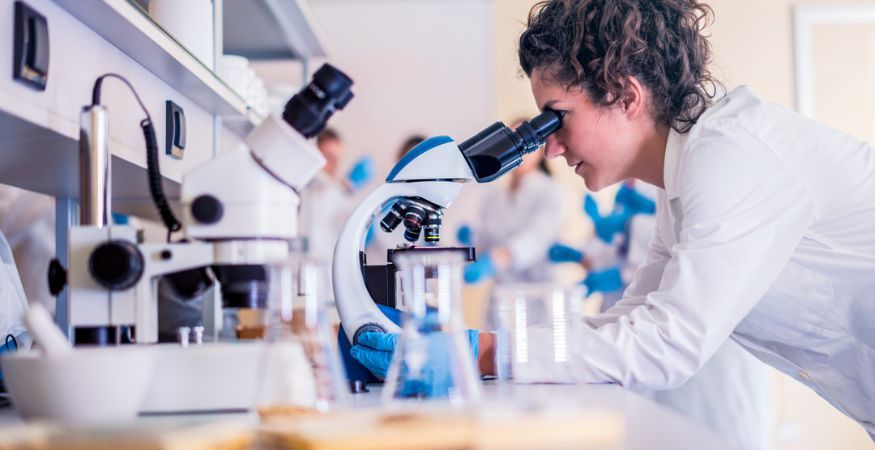
Chirality is a concept in chemistry that refers to the spatial arrangement of atoms in a molecule. It is particularly relevant when discussing the different types of CBD, as the various stereoisomers can have different effects on the body. Stereoisomers are molecules with the same molecular formula but different spatial arrangements of their atoms. In the case of CBD, there are eight possible stereoisomers, each with its own unique properties and potential effects.
Do Different Types of CBD Chirality Work Differently?
Yes, different types of CBD chirality can work differently in the body. The natural trans-form of CBD, which is the most common and well-researched form, binds allosterically to cannabinoid receptors and directly to a host of other receptors. This trans-form has been extensively studied and is considered safe for consumption.
However, other CBD stereoisomers have not been as thoroughly researched, and their interactions with the body may differ from the natural trans-form. These differences in interaction can potentially lead to varying effects and safety profiles.
For example, some studies have shown that certain CBD stereoisomers may interact with cannabinoid receptors more weakly than the natural trans-form. This could result in reduced efficacy or altered effects when compared to the well-studied natural form of CBD. Additionally, the safety of these less common stereoisomers has not been fully established, raising concerns about potential side effects or toxicity.
It is important to note that the majority of CBD products on the market contain the natural trans-form of CBD, which has been deemed safe and effective through extensive research. However, as the industry continues to evolve and synthetic production methods become more prevalent, it is crucial to be aware of the potential implications of different CBD chiralities. Further research is needed to fully understand the effects and safety profiles of these less common stereoisomers.
While the natural trans-form of CBD is well-researched and considered safe, other CBD stereoisomers may have different interactions with the body and varying effects. As the industry continues to develop and synthetic production methods become more common, it is essential to be aware of the potential implications of different CBD chiralities and to prioritise further research on their effects and safety profiles.
How to Tell Which Type of CBD Is in Your Product?
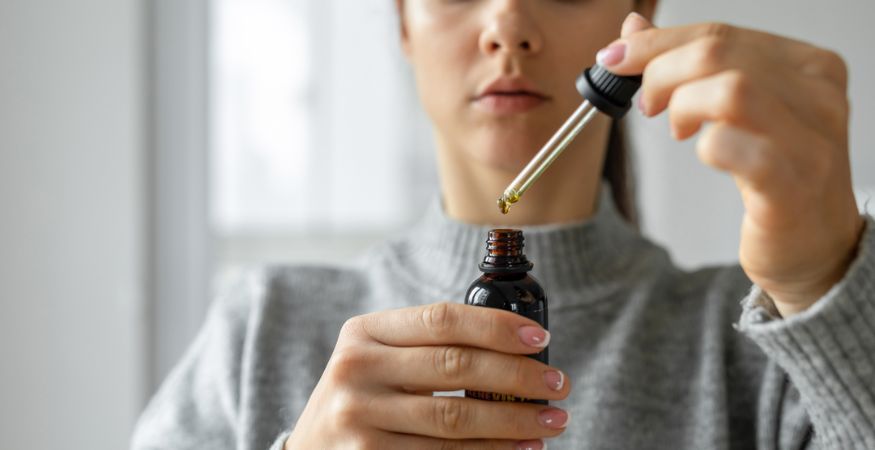
When trying to determine the types of CBD in a product, it is essential to look for specific information on the label or packaging. The source will often be mentioned, which can help you identify whether it is natural or synthetic. Here are some key points to consider when examining a CBD product:
Natural CBD
Natural CBD products will typically state their source, such as "sourced from hemp" or "sourced from C. sativa L. plants." This indicates that the CBD has been extracted from a natural plant source and is not synthesised in a laboratory.
Synthetic or Synthesised CBD
Synthetic or synthesised CBD products are created in a laboratory and do not come from a natural plant source. These products are not legally required to disclose that they are not derived from hemp or C. sativa L. plants. As a result, if a CBD product does not mention hemp or C. sativa L. as its source, it is more likely to be synthetic or synthesised CBD.
One should take note that synthetic CBD products may not have undergone the same rigorous testing and quality control measures as natural CBD products.
To determine the type of CBD in your product:
- Carefully examine the label and packaging for information about its source.
- Look for terms like "full-spectrum," "broad-spectrum," or "CBD isolate" to identify natural CBD products, and be cautious of products that do not mention hemp or cannabis as their source, as they may be synthetic or synthesised CBD.
- Always choose high-quality, lab-tested CBD products from reputable companies to ensure safety and effectiveness.
Which type of CBD is the Best?
When it comes to choosing the best type of CBD, it's essential to consider the pros and cons of each option. There are three main types of CBD: natural, synthetic, and synthesised. Each has its advantages and disadvantages, which we will explore below.
Natural CBD
PRO: Natural CBD is produced by nature, and our bodies know how to use it effectively. It is derived from the C. sativa L. plant, which contains a variety of beneficial compounds that work together to create the entourage effect. This synergistic relationship between cannabinoids and terpenes enhances the overall therapeutic benefits of natural CBD.
CON: The production of natural CBD can be labour-intensive, as it requires the cultivation, harvesting, and extraction of the hemp plant. This process can be time-consuming and may result in higher costs for the end product.
Synthetic CBD
PRO: Synthetic CBD can produce a very pure compound, as it is created through chemical or biological synthesis. This allows for precise control over the final product, potentially resulting in a more consistent and reliable CBD experience.
CON: Synthetic CBD may not always factor in chirality, which refers to the specific arrangement of atoms within a molecule. This can lead to differences in how the body processes the compound, potentially affecting its safety and efficacy. Additionally, synthetic cannabinoids have been linked to toxic reactions, causing concerns about their overall safety.
Synthesized CBD
PRO: Synthesised CBD can be created by feeding sugar to modified yeast or bacteria, allowing for the production of any cannabinoid. This innovative approach offers the potential for a wide range of therapeutic applications.
CON: The production of synthesised CBD can be expensive compared to hemp-derived CBD, and scaling up the process to meet market demand may prove challenging. This could result in higher costs for consumers and limited availability of synthesised CBD products.
Products made with natural CBD are generally considered the best option, as they allow users to benefit from the entourage effect with the presence of other minor cannabinoids and terpenes. However, suppose natural CBD is isolated to a pure compound. In that case, it loses the entourage effect advantage, making its effects on par with those of synthetic and synthesised CBD, subject to which stereoisomers they contain.
It's essential for consumers to research and understand the differences between these types of CBD and choose products that align with their preferences and needs. Always look for independent evidence of third-party testing, such as lab reports and certificates of analysis to ensure the quality and safety of any CBD product you decide to use.
Conclusion
In conclusion, each of the various types of CBD comes with unique properties and benefits. Natural CBD is made from the hemp plant, and the different types of natural CBD extract include whole plant, full-spectrum, broad-spectrum, narrow-spectrum, and single-spectrum (isolate).
CBD is also available in synthetic and semi-synthetic (synthesised) forms. Different types of CBD chirality exist, but it is unclear if they work differently or produce different results.
It's essential to check the type of CBD in your product and always purchase from reputable sources. Ultimately, the types of CBD that are best for you will depend on your individual needs and preferences.


